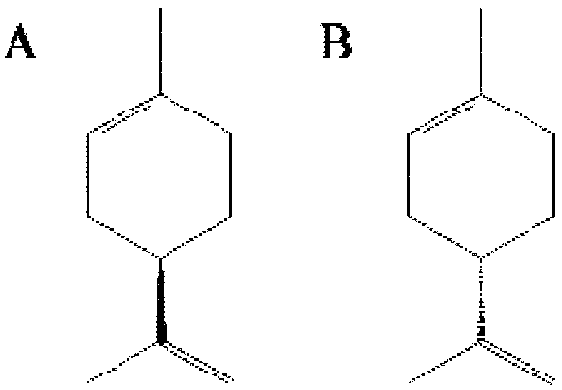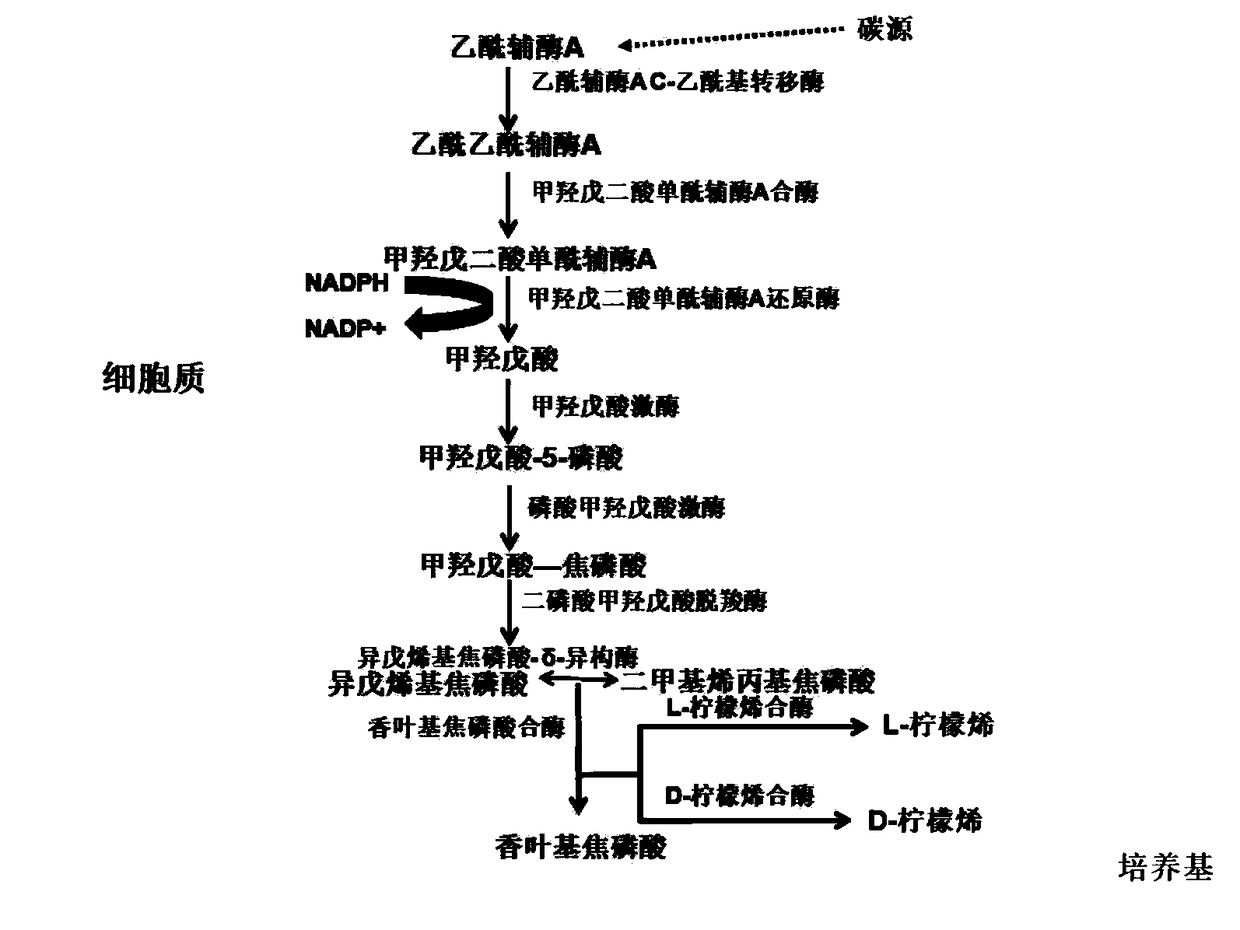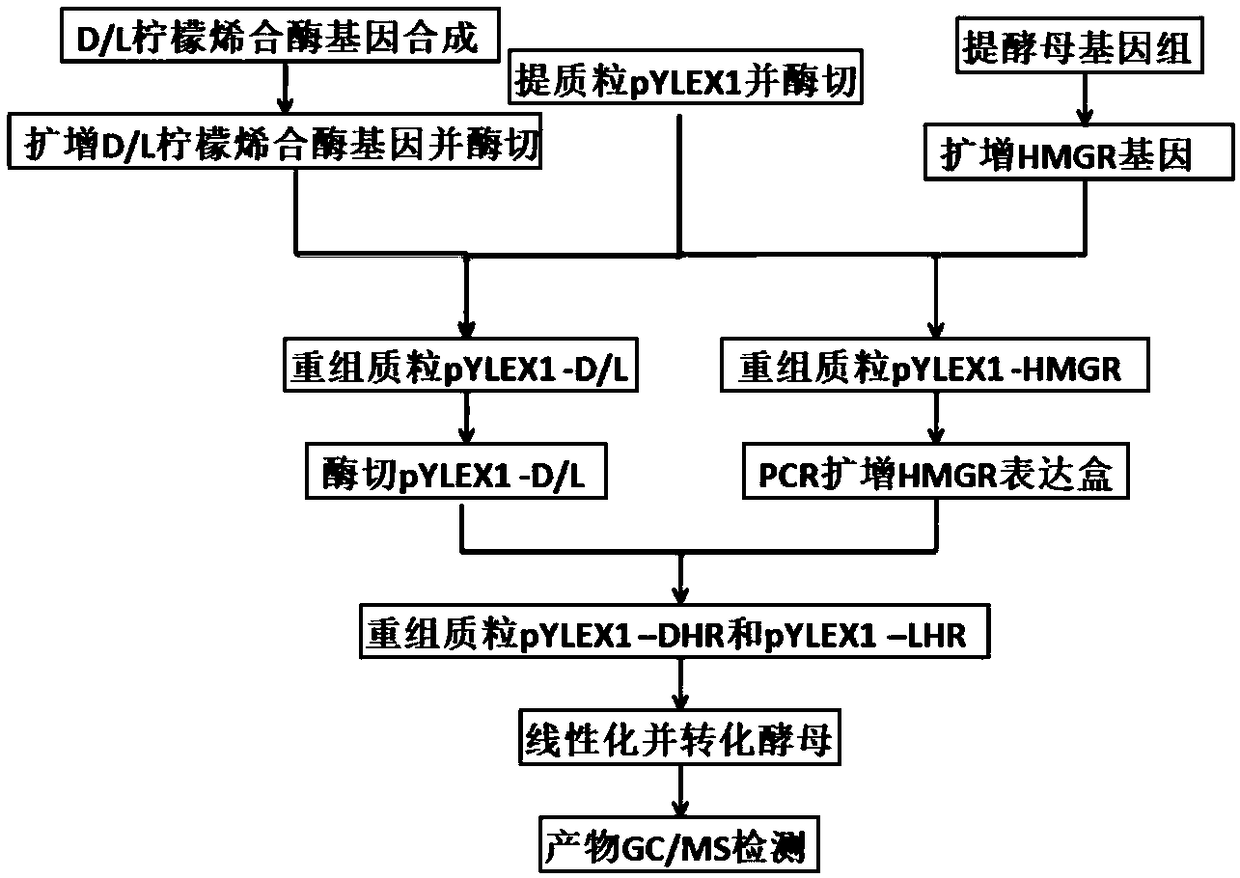Limonene-producing yarrowia lipolytica and construction method and application thereof
A technology of Yarrowia lipolytica and limonene, applied in the field of molecular biology, can solve the problem of low yield of limonene heterogeneous synthesis, and achieve the effect of wide application prospects
- Summary
- Abstract
- Description
- Claims
- Application Information
AI Technical Summary
Problems solved by technology
Method used
Image
Examples
Embodiment 1
[0051] Example 1: Construction of Yarrowia lipolytica strain producing limonene
[0052] The construction process of recombinant strains is as follows: image 3 shown.
[0053] According to the nucleotide sequence of D-limonene synthase gene in Genebank (210bp truncated at the 5' end and 262bp truncated at the 3' end, and the start codon ATG and the stop codon TGA were added before and after) and L-limonene synthase The nucleotide sequence of the gene (196bp truncated at the 5' end and 345bp truncated at the 3' end and the start codon ATG and the stop codon TGA were added before and after) respectively according to the codon usage preference of Yarrowia lipolytica Optimize and add a His tag at the 3' end of the gene, and then synthesize it by a gene synthesis company. The nucleotide sequence of the synthesized D-limonene synthase gene is shown in SEQ ID NO.1, and the nucleotide sequence of the L-limonene synthase gene is shown in Shown in SEQ ID NO.2. According to the synth...
Embodiment 2
[0067] Embodiment 2: Fermentative production of limonene by genetically engineered bacteria obtained in embodiment 1
[0068] Each of the engineering bacteria Po1g ku70Δ-DHR and Po1g ku70Δ-LHR obtained in Example 1 and the host strain Yarrowia lipolytica Po1g ku70Δ were each taken one ring, inoculated in a 250mL Erlenmeyer flask containing 25mL of YPD medium, 30°C, 225rpm / min, after 24 hours of shaking culture, inoculate 1% of the inoculum in a 250mL Erlenmeyer flask containing 25mL of YPD medium, 30°C, 225rpm / min, continue shaking for 16 hours, then inoculate 1% of the inoculum into 25mL of YPD medium 250mL Erlenmeyer flask based on base, and add 10% dodecane, 28 ℃, 225rpm / min, shaking flask fermentation for 5 days.
[0069] After the fermentation, all the fermentation broth was poured into a 50mL centrifuge tube, centrifuged at 7500rpm, 4°C for 5min, and the organic phase was taken to pass through the membrane, and the gas chromatography-mass spectrometry was used for testi...
Embodiment 3
[0073] Embodiment 3: Fermentative production of limonene by genetically engineered bacteria obtained in embodiment 1
[0074] Take one ring each of the engineering bacteria Po1g ku70Δ-DHR and Po1g ku70Δ-LHR obtained in Example 1, inoculate them in a 250mL Erlenmeyer flask containing 50mL of YPD medium, at 28°C, 250rpm / min, shake and cultivate for 24h, then inoculate with 1 % of the inoculum was inoculated in a 250mL Erlenmeyer flask containing 50mL of YPD medium, at 28°C, 250rpm / min, continued shaking for 16 hours, and then inoculated into a 250mL Erlenmeyer flask containing 50mL of YPD medium at an inoculum of 1%, and added 8% dodecane, 30°C, 200rpm / min, shake flask fermentation for 4 days.
[0075] After inspection, the output of heterologously synthesized limonene by the engineering strain producing D-limonene in the middle is 0.6175mg / fermentation broth, and the output of heterologously synthesizing limonene by the engineering strain producing L-limonene is 0.3564mg / L ferm...
PUM
 Login to View More
Login to View More Abstract
Description
Claims
Application Information
 Login to View More
Login to View More - R&D
- Intellectual Property
- Life Sciences
- Materials
- Tech Scout
- Unparalleled Data Quality
- Higher Quality Content
- 60% Fewer Hallucinations
Browse by: Latest US Patents, China's latest patents, Technical Efficacy Thesaurus, Application Domain, Technology Topic, Popular Technical Reports.
© 2025 PatSnap. All rights reserved.Legal|Privacy policy|Modern Slavery Act Transparency Statement|Sitemap|About US| Contact US: help@patsnap.com



